Serious about Yogurt
Happy New Year! I hope you all had a lovely holiday. I certainly did. It was fun, relaxing and very, very over indulgent. As many good holidays often are.
So, like many people out there, I have started the new year with a few new inspirations. The first, to go along with counteracting some of that seasonal indulgence, is to get serious about yogurt. It’s such a fantastic snack, and I’m hoping it will actually get me to eat breakfast and lunch and keep me from mindlessly eating throughout the day.
As a first step, I bought a Euro Cuisine YM100 Automatic Yogurt Maker. I’ve made yogurt once before with some success using nothing more than a cooler and a heating pad. But, that setup was pretty sketchy at best, and $40 for a yogurt maker that comes with 7 glass jars is a good deal. I love the idea of having yogurt around most of the time for cooking or just eating, and not piling up more plastic containers.
I also like the idea of getting exactly the texture of yogurt that I want. That means starting with good cultures and using the right kind of milk. But, as a newbie to this whole yogurt making thing, I really wasn’t sure what texture I really wanted or what milk would give it to me. So, I yesterday, I played mad scientist and made up 5 little cups of yogurt with 5 different milks: Skim (what I usually drink), raw whole milk, pasteurized goats milk, vanilla soy milk and just because I had some that needed to be used, heavy cream. For a starter, I used Total 0%. (I usually prefer their full fat version, but since this was just for a starter, I went skim).
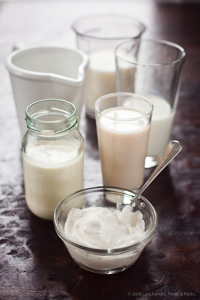
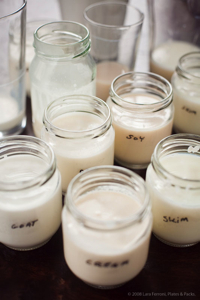

After adding about a tablespoon of yogurt to each 6 ounces of milk, and giving it a good stir, I set the jars in to warm for about 10 hours. Milks with higher fat content will firm up more quickly than skim, and I found that the soy milk firmed up even faster. With such different fat contents, it’s not surprising that the yogurts all turned out quite differently.
The skim milk yogurt was my least favorite of the bunch. That’s not all that surprising, although if you had asked me, I would have said the soy since I have an aversion to soy milk in general. The skim yogurt was fine actually. Although a little too sour and a bit chalky, the biggest problem was that it was watery. By draining it in a sieve or in some cheese cloth, I could get rid of the watery texture. Most yogurt recipes you read recommend adding some powdered milk to the mix if you are using skim milk to make your yogurt for this very reason.
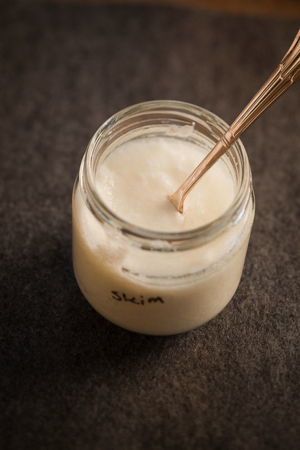
The raw milk yogurt had a nice bright flavor and creamy texture, although still a bit on the chalky side. Since raw milk isn’t homogenized, I found that the yogurt was not really homogenized either and developed its own yogurt “cream top” which was fairly easily mixed in.

The goat’s milk is a bit of a puzzle to me. Flavor-wise, it’s the clear winner. It’s kind of zesty without being sour. It’s super smooth with no chalkiness. But, it also didn’t firm up much at all. It’s thick, but almost glue like in texture. Mixed in with some granola and preserves, it will make a fine snack, but I’m going to have to play around more with timing to get it to be a bit more firm.
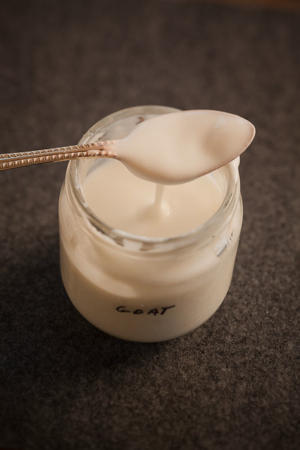
The biggest surprise to me was the soy milk. I pretty much despise the stuff, but wanted to give it a try anyway. I bought the Silk vanillla soy milk which is lightly sweetened. According to the machine’s manuel, you need to use a sweetened soy milk if you want the cultures to develop. And, develop they did. This was the quickest yogurt to make and I honestly don’t think I’d know it was soy if I was blind taste testing it. But, it’s also presweetened and I prefer using a plain yogurt and mixing in my own flavors.
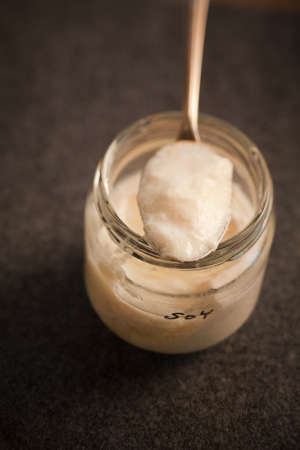
Finally, the crazy prize goes to the cream. I’m not exactly sure what I created with this, but I have to tell you, it’s fantastic. It’s like butter meets cream cheese meets clotted cream. Spread it on a bagel, and oh my. I won’t be making it every week, but it will be made again.

Of course, there are still other milks to try, but my next trials will be all about the goats milk and figuring out what I need to do to get it just a touch thicker. In the meantime, I’ll be stirring in spoonfuls of a Seville Marmalade (recipe from Clotilde in the January issue of Martha Stewart... it’s fantastic!).
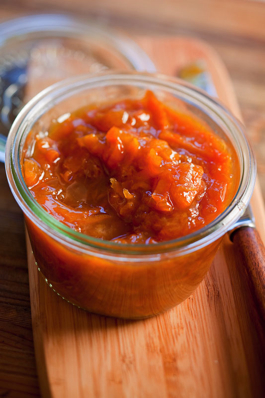
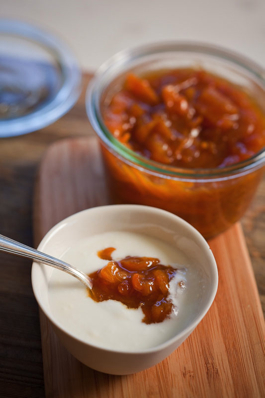
Wow. I’m inspired to get a yogurt maker now. If anything, just for the glass jar and the fun.
Intriguing…I set yogurt every alternate day & the kids love it. I use skimmed,homogenised milk& get a beautiful thick set yougurt which gets firm after sitting to chill overnight. The last full cream version sounds wonderful. Clotted cream like, & indulgent. I think I shall give that a go; just made some bitter orange marmalade last week. Thanks for this post!
I have two yogurt makers since I love making it so much. I agree that the cream version is the best (creme bulgare). The citrus season is in full bloom here in Florida and I have been baking so much with it… just lovely.
This looks fantastic! Never have I make yoghurt using this fun machine!!
Interesting experiment! I have it in my resolutions to try some yogurt making this year, as well as soft cheeses. I love the side by side comparisons.
Oh no, now I’ve found another kitchen gadget to covet! What a wonderful experiment, the cream version looks to die for!
I have a deep and abiding fascination with all talents or skills that seem useful in a post-apocalyptic world. Bread making. Make your own cheese. Now make your own yogurt. I particularly love the flair for scientific experiment in this post. It made it both fun and informative.
Do you think you could mix milks together for some success? Some of the goats milk with some of the silk? a touch of cream into something else… the possibilities seem endless.
Erin – sure! Why not! I definitely plan on mixing them up some to find out what I like best.
Also, I plan on making some non-cultured stuff in it too. It’s super easy to make your own creme fraiche or sour cream with a heating pad… but making it in the yogurt maker is going to be even easier. It’s basically just like making yogurt, but you use a different acid… a little lemon juice, or a little buttermilk.
Hey, your yogurt jars are WAY cuter than mine (I have a Donvier, and they’re plastic).
I was making yogurt regularly, but we eat it faster than I have time to make it, and I sort of gave up. Did you scald the milk and let it cool before starting the yogurt, or just mix it up directly? That would certainly cut down on the time needed.
I didn’t scald the milk first, although that might make a difference in the consistancy. It also seems like it would kill some of the good bacteria though, plus with making 5 different types it wasn’t really feasible. I think I’ll try scalding 1/2 of the batch next time I make it with goats milk to see if that makes a difference.
YUM! Talk about a lot of yogurt. I have a complete aversion to soy milk too, except in a latte, that is OK – as long as some vanilla is in there. Otherwise the stuff is pretty nasty.
Awesome little jars. I would love to know where you got those – I was looking for small jars everywhere just before Christmas, and couldn’t find any.
Hi L!
I have the exact same Eurocuisine yogurt maker as you (Christmas gift!), and my mum found this entry and passed it on to me.
I’m so jealous that you could get goats’ milk and raw milk to make yogurt with! That is freakin’ awesome.
Re: runny yogurt, the instruction manual definitely recommends boiling the milk first because it ensures a firmer texture. Adding a few tablespoons of powdered milk helps too. And did you refrigerate for 3 hours after taking them out? That’s another step that really helps the texture. (I have had two full batches come out really lame and liquidy because I deviated from the standard method.)
Don’t you just love the glass jars?
I haven’t tried soy milk yet, but you’ve totally inspired me – gotta do that next batch! 🙂
Yay yogurt makers! Thanks for posting?
This is spectacular! Thanks so much for sharing your experiments with yogurt! I’m intrigued! Maybe once I get a good grip on canning and making jam, I’ll move on to yogurt. I’d love to try the soy and the cream!
Oohhh…I’ve been making my own yogurt too. I got a cheaper yogurt maker (Salton) a few months back. I always scald the milk (I thought you had to?) and then cool before adding the cultures. I just use 1% organic milk, since that what we drink. I never even considered trying soy, but maybe I should. Too bad you have to use sweetened. The cream version sounds delish! A bit like the Brown Cow (cream on top) stuff. I’d love to try creme fraiche too- what’s the difference for that one?
Thanks for sharing this valuable information. I’ve been stuck in the same wonderful yogurt making mode for way too long. I really would like to try one/all of your methods.
I’ve never made my own yoghurt. I’d definitely like to try it, though.
I have been dabbling in yogurt making as well. I use raw whole milk and do take the temp up to 180 F before putting it in the maker, but I am trying to find a way to make mine more on the creamy side and less gelatinous. I wouldn’t say it is like a gelatin but it is closer to gelatin than a really fine creamy yogurt. Any thoughts? Could you tell us more about the consistency gelantinous/creamy on yours? I do think that my raw whole milk looks very similar to yours which is pictured. Thanks for the post!
I love the seville orange marmalade with yogurt. Sevilles are my absolute favorite- that is a great way to enjoy them…almost like a fancy creamsicle.
Thanks for sharing this! I’m a yogurt fiend!!
That marmalade looks delish!
Would like like to play some meme tag? There is a bit more info here:
http://www.ofsoupandlove.com/2009/01/food-poison-tastic.html
So come play, if you like.
I got a yogurt maker for Christmas, so this post is specially useful to me now. Thanks for sharing your knowledge (and experiments)! The first time I made yogurt with my new toy I used skim milk (and I don’t really feel like using powdered milk, to be honest) and it was a bit too watery. I guess I’ll give a try at soy milk next 🙂
I often read your blog and really enjoy it. I had to delurk for a second and say how much I really liked this post.
The cultured cream would be wonderful with scones and tea.
That last creation sounds delicious. Your post makes me want to make it myself just to try it out!
I set yogurt in a insulated casserole, but this is sooo cute,really liked the info, will try out soy milk too.
This morning I took out a tub of Brown Cow whole milk plain yogurt and started eating the cream off the top! Ahhhh…creamy enough to coat my mouth. It was a great beginning to my day!
I love those pictures – like a school science experiment. Very interesting read too. I use a lot of yogurt in cooking.
I never thought about making yogurt. Great tips.
I love yogurt, and I LOVE my yogurt maker, but unfortunately I don’t make this item often enough. Sadly, my maker sits hidden away in the back of the cupboard (limited workspace in the galley), but you’ve reminded me to dig that item out and get busy.
I’ve got to try making the cream base…too lovely NOT to try. 🙂
Dear Lara,
I like your blog.
I’ve just bought a yoghurt-maker too and I’m feeling like a crazy scientist as well.
I liked yoghurt from 1,5% baked milk. It’s possible to get such milk in our supermarkets. Very tasty!
and my last little blog post is about yoghurt too!!!
http://www.jamieoliver.com/bloggers/viewtopic.php?id=39956
Sour cream is very popular in Russia, so before reading your post, I bought some cream and going to make some today in yoghurt-maker. What a coincidence :))
This is so cool! If you need a great recipe to use your yogurt, try these healthy smoothies!
Making yogurt yourself – I’m impressed! I’m really a yogurt freak and I love using it (especially the very creamy types – so I’d probably LOVE your cream base one) for desserts or just as a snack, but I’ve never even had the idea of producing it myself. Now you’ve really put a bug in my ear…
Yesterday I used 10% cream with danone yoghurt as starter. It really tastes like our Russian sour cream!!!
Hello there!
Having experimented with yogurt and many other thigns thought I’d post a few points. My apologies if someone has already said them…
!. Scalding… yes this may wipe out any bacteria present, but that’s also the reason why scalding is done. No bacteria= happy ready-made home for the yogurt bacteria… It does completely wipe put the whole reason for using raw milk, however, since it essentially pasturizes the milk.
If you have lots of different types of milk… no problem. Using those cute little glass jars, stick them in the microwave… usually takes one minute per cup of liquid… just make sure it is not over 110 degrees fahrenheit.
2. If you loved the cream, then next time do the same process, only mix a tablespoon of buttermilk with active cultures. The result? Creme fraiche… possibly one of the yummiet things in existence… waaaay better than sour cream 🙂
3. Perhaps you’re wondering what happens if the temp goes over 110? You get curdling. I have never tried to recreate the accident, but the one time I set my yogurt in the oven and forgot to turn it off of “warm (150 degrees) immediately, I got something like ricotta… and it was divine.
4. Whole milk makes the most beautiful yogurt ever… my son will happily eat it instead of whipped cream…
SO there you go… and again, my apologies if someone else posted this up here… the list was just so long, and I only had a few minutes 🙂
P.S. Unless you live in a VERY cold area, a yogurt maker is NOT necessary.
DO the prep work, and while you are doing it, set you oven on “warm” for about 5 minutes… once the milk is down to 110 degrees fahrenheit and you’ve mixed in your cultures, then set it on a cookie sheet lined with a towel. If the towel’s big enough, wrap it around the lidded yogurt containers (if you are using a bowl, just put a warmed ceramic plate over the top) Let sit a minimum of 8 hours, up to 24 if you are lactose intolerant (the yogurt will be tangier because the lactose is gone, but you can always add honey 🙂
ALSO, IMPORTANT NOTE!!!!!! If you use too much culture, then you WILL end up with watery yogurt… the reason being is that there is too much competition for the bacteria to set up correctly. 2-3 tablespoons per 4 cups of liquid should be more than sufficient.
Have fun 🙂
Forgot to mention that after 5 minutes it’s important to turn the oven off….
I know, bad commenter…bad…
Looks like fun! Homemade yogurt is so much better than anything you buy in the store.
I just found your sight and OHMYGOSH i love it already!! 🙂
wow! i wanna do this too!
The pictures are breathtaking in their simplicity. I have been making yoghurt all my life. You might want to check out this flavoured, baked yoghurt recipe. It is absolutely delish http://www.gelskitchen.com/view/recipes/rec/10018/-/
i had never even heard of a yogurt machine, but this looks fantastic.
Not a yogurt fan, but these pic’s make it look soo good!
It seems to me that with cream you achieved a yoghurt version of mascarpone 🙂
Hi,
I’m about to buy a yogurt maker (I was inspired by this blog post, actually) and I was wondering if you did any more experiments with goat’s milk?
I’m thinking about trying coconut milk and almond milk too.
Have you done any experimenting with these?
I’d love to know.
Thanks!
J
Hi J,
Yes, actually. I did another whole batch with goat’s milk, this time using a yogurt starter instead of yogurt. The yogurt starter has a little bit of dehydrated milk in it. I also heated the milk first this time… I’m not sure which of those things made a difference, but I did get a nicer texture and a really nice flavor out of that batch. I’m still playing around with the mixture… I tasted some yogurt a friend of mine had made and it blew me away… mine isn’t quite there yet, but I’m hoping to eventually.
I haven’t tried coconut milk or almond milk. Not sure how those would work, but it sounds like a fun experiment. My guess is that like the soy milk, they’ll need some sugar in the mix in order to get the right texture.
-L
Hi Lara!
Thanks so much for your response. Glad to hear your experimenting is working out better for you.
I still haven’t purchased my yogurt maker yet, but I plan to soon (along with the yogurt starter). I can’t keep spending money on those plastic tubs!
Thanks again!
I love your blog!
Take care!
I just made a batch of the goat-milk yogurt,
that… is…
RIDICULOUS!! Thanks for blogging about it: I’ve wanted to try this for a while but afraid I’d end up wasting it.
Since I’m broke, buying the yogurt maker was out of the question…
So I just put steaming hot damp towels (microwaved for 2 minutes) around the jar of warmed, inoculated goat milk then placing the whole thing in an insulated ice bucket (warmed by pouring boiling water in it then covering it for 2-3 minutes), and then checked on it every hour or so.
I’ve added a bit of kefir to the batch, too. I figured the extra tartness from the kefir culture would back up the mustiness of the goat milk. Oh yeah…
I received a yogurt maker for Mother’s Day and we love it! My four-year old pleads with us for more yogurt at snack time. Thank you for running the experiement we were think of. So far we have not varied from whole milk becuase it has just been so delicious. I made the creme bulgar last nigh for a dinner party tonight. Wonderful post!